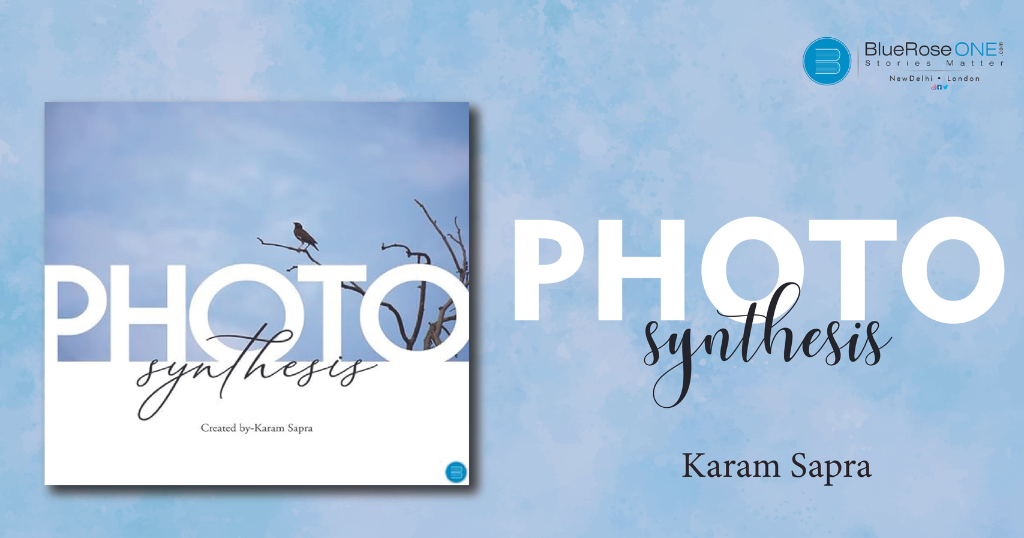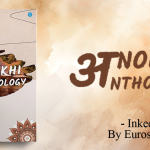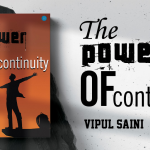Title – PhotoSynthesis
Author – Karam Sapra
Genre – Coffee Table, Nature Photography
Review:
“Photo Synthesis” by Karam Sapra is a visual masterpiece that takes readers on an awe-inspiring journey through the natural world. As the adage goes, “A picture is worth a thousand words,” and this book undoubtedly proves the wisdom of that saying. Sapra’s lens has masterfully captured the essence and beauty of nature, leaving readers with a deep appreciation for the world around them.
This coffee table book is a testament to the fact that beauty is not just in the eye of the beholder but also in the hands of the creator. Karam Sapra, a high school student with a passion for photography and an innate sense of aesthetics, has created a stunning collection of photographs that reflect his deep connection with the natural world. “Photo Synthesis” invites readers to experience the wonders of Earth, Water, Fire, Air, and Space through Sapra’s lens.
The book begins with a thoughtful introduction that sheds light on the inspiration behind this visual journey. Sapra acknowledges the age-old adage that a picture is worth a thousand words and explains how he was driven to capture the indescribable beauty of nature through his lens. He expresses the deeply personal nature of one’s relationship with nature and the profound impact it can have on individuals. This heartfelt introduction sets the tone for the book, making it evident that “Photo Synthesis” is not just a compilation of pictures but a labour of love.
Divided into chapters based on the five elements—Earth (Bhumi), Water (Jal), Fire (Agni), Air (Vayu), and Space (Aakash), the book takes readers on a holistic journey that explores the magic of the natural world. Each chapter is a testament to Sapra’s keen eye for detail, his sensitivity to beauty, and his unwavering love for nature.
The first part, “Earth (Bhumi),” introduces readers to the solid and grounding elements of nature. Sapra’s photographs in this section range from breathtaking landscapes to intricate details in rocks and soil. The images convey the diversity and magnificence of the Earth, and his captions add a layer of depth to the visual experience. Whether it’s the sprawling vistas of mountains or the delicate patterns in a sand dune, Sapra’s lens captures Earth’s poetry.
Moving on to the second part, “Water (Jal),” readers are treated to a mesmerising collection of photographs that celebrate the fluidity and serenity of water. The play of light on the surface of a lake, the mighty force of a waterfall, or the tranquil ripples in a pond—each image in this section is a celebration of water’s ever-changing beauty. Sapra’s ability to freeze these fleeting moments in time is nothing short of magical.
The third part, “Fire (Agni),” introduces an entirely different element, one that is associated with passion, energy, and transformation. Sapra’s photographs capture the warmth and vibrancy of fire, from the glowing embers of a campfire to the fiery hues of a sunset. His skill in capturing the interplay of light and shadows is particularly evident in this section.
The fourth part, “Air (Vayu),” takes readers on a journey through the skies. Sapra’s images of clouds, birds in flight, and the vast expanse of the sky evoke a sense of freedom and lightness. The photographs in this section perfectly encapsulate the feeling of looking up at the endless blue sky and being in awe of its boundless beauty.
The final part, “Space (Aakash),” is a fitting conclusion to this visual odyssey. It explores the mysterious and infinite nature of the cosmos. Sapra’s astrophotography is nothing short of breathtaking, and his ability to capture the majesty of the night sky is truly remarkable. The images of stars, galaxies, and celestial events are a testament to the wonders of the universe.
One of the strengths of “Photo Synthesis” is Sapra’s ability to infuse his photographs with a deep sense of emotion. Each image tells a story and elicits an emotional response from the viewer. It’s evident that these are not just snapshots but carefully composed works of art that reflect the photographer’s connection with his subjects. This emotional depth adds layers of meaning to the visual experience.
The layout and design of the book are elegant and well-organized. The photographs are given ample space to breathe, and the high-quality printing ensures that every detail is preserved. The book’s production values are top-notch, which is essential for a coffee table book where the visual element is paramount.
While the photographs are undoubtedly the stars of the book, Sapra’s writing is also noteworthy. His introduction sets the tone for the book, and his captions provide valuable context and insights. His writing is clear, heartfelt, and adds a personal touch to the visual journey.
“Photo Synthesis” is a book that can be enjoyed by readers of all ages. It’s a perfect addition to any coffee table, where guests can pick it up and get lost in its pages, each time discovering something new and awe-inspiring. Sapra’s work is a reminder of the beauty that surrounds us, often unnoticed in our fast-paced lives. It encourages readers to pause, appreciate, and connect with the natural world.
In conclusion, “Photo Synthesis” by Karam Sapra is a visual masterpiece that transcends words. It’s a testament to the photographer’s talent, sensitivity, and deep connection with nature. The book invites readers to embark on a journey through the five elements and discover the magic of the world around us. It’s a work of art that deserves a place in every home, reminding us of the beauty that exists in the simple act of looking at the world with wonder and appreciation. Karam Sapra’s debut book is a triumph, and it’s evident that he has a bright future in the world of photography.
With “Photo Synthesis,” Karam Sapra has not just captured nature’s beauty; he has shared it with the world, leaving an indelible mark in the realm of photography and literature. This book is a treasure, a source of inspiration, and a reminder of the profound connection between humanity and the natural world.
















